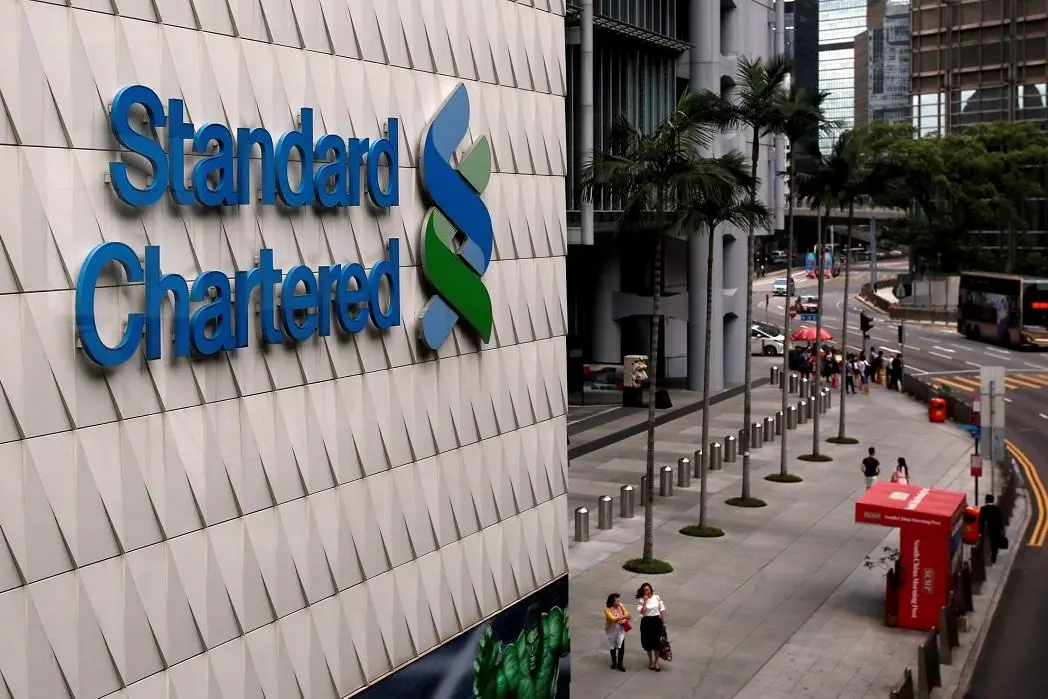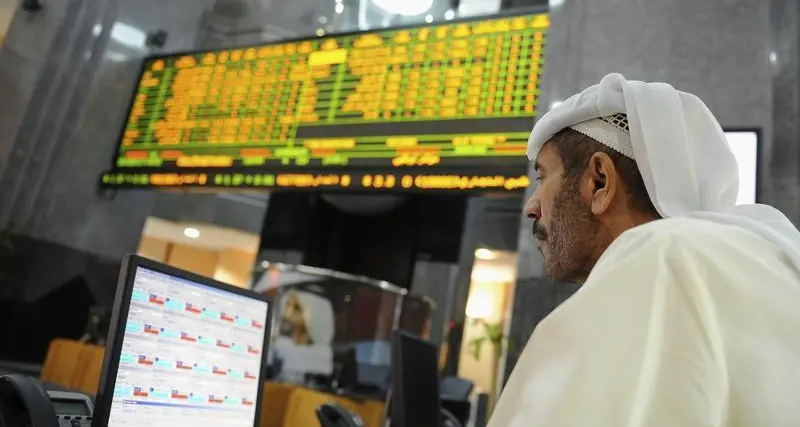PHOTO
In an exclusive dialogue with Banker Middle East, Naushid Mithani, MD, Market Head, GSAC EMEA & PvB Head, UAE at Standard Chartered on the private banking landscape across the Middle East
Describe the development of the private banking landscape in this market.
In what ways have you seen progress? The private banking landscape in the region is definitely growing. We’re seeing growth rates of above eight per cent in the Middle East and Africa and this is our projection for the next few years— which is above the average GDP globally. Thus, there is wealth creation in the region, and we see this growing through a combination of both personal and incorporated wealth.
Many of our clients believe that their personal and business wealth are interchangeable. Therefore, what we need for this market is a holistic approach. Many of our clients believe that their personal and business wealth are interchangeable. With Standard Chartered, they have it all under one roof. Nevertheless, there is definitely sufficient room to scale for everyonepureplay private banking, the traditional Swiss banks, universal banks as well as local banks and wealth managers in the market.
In light of this, we must understand that competition is here to stay, therefore we need to be nimble and clientcentric.
According to the Boston Consulting Group’s, Global Wealth 2017: Transforming the Client Experience, wealth in the Middle East and Africa (MEA) is projected to soar up to $12 trillion by 2021, of which 21 per cent will be contributed by the UAE, Oman and Saudi Arabia.
Thus, in order to keep numbers of UHNWIs in the UAE and wider region strong and rising in the years to come, financial service professionals and wealth managers in the region need to continuously enhance their offerings, with a wider range of strategic investments, deeper fintech integration, and digital advancement through expert channels.
How has Standard Chartered’s private banking business grown in the last 18 months?
We have been committed to investing and innovating in our private banking business over the past two years, to position it for further growth through a range of initiatives designed to enhance our client experience. We have strengthened our relationship management teams, having hired 60 new frontline team members globally in 2017.
At the same time, we launched our first Private Banking Academy in partnership with INSEAD and Fitch, to deliver an industryleading frontline training programme across key markets. We view our open architecture platform as a competitive differentiator, allowing our clients to access a wide range of nonproprietary solutions. We are enhancing it through digitisation, enabling realtime price discovery across equity derivatives and fixed income, and halving preparation time for investment proposals. These improvements are also helping to drive our financial performance.
In 2017, our global private banking assets under management increased by 18 per cent (since 31 December 2016), driven by positive market movements and $2.2 billion of net new money.
Measuring this to other emerging markets, how do we compare and where do you see opportunities?
According to Standard Chartered Global Research, economic growth in the Middle East is expected to continue picking up through 2018, although underlying sentiment is likely to remain subdued due to the region’s growing geopolitical uncertainty. As markets focus on pricing these risks, linear ways of looking at the region may no longer apply.
For example, despite slower growth in both the number and financial wealth of high net worth individuals in the Middle East relative to other regions, there are still bright spots and opportunities in markets like the UAE and Saudi Arabia where we are likely to see continued wealth expansion—the former driven by the forecasted growth in nonoil GDP and the latter due to the expected emergence from recession in the year ahead.
A report released by Dubai International Financial Centre outlines how the Middle East investment market is expected to more than double between 2012 and 2020, with assets rising to $1.5 trillion by 2020 from $600 billion in 2012—a 12 per cent annualised rate.
This growth is, in part, driven by the rise in affluent and high net worth individuals, who will increasingly seek the support of professional fund managers to protect and grow their personal wealth. We see this as a natural progression as these wealthy investors—many of whom are business owners juggling multiple demands—increasingly appreciate the value of expert advice delivered on a timely basis in reaction to the latest market movements, with minimal judgement biases. In today’s environment, investors are looking for timely and actionable market insights that are relevant to their goals.
Our Investment philosophy recognises that markets are not always efficient: individuals have cognitive biases that influence investment decisions and eventually financial markets. Since 2011, we have been refining a process that helps clients overcome these informational and cognitive biases to provide them with distilled information that helps them to make decisions that meet their needs.
Comparing to other parts of the world, how do you view family offices in this region?
Having a holistic approach is quite critical in both the Middle East and South Asia. A lot of our clients in the Middle East are looking for a longterm investmentdriven approach, with London as one of their booking centres, and relevant financing solutions for them. We also see a new trend emerging as they increasingly start to consider Singapore and Hong Kong as their booking centres.
This is primarily driven by the trade relations with China and South Asia. In Asia, clients are more inclined to have Singapore and Hong Kong as their booking centres. The demand and growth of these two markets as global financial centres alongside London, New York and the like has given rise to an affinity to explore opportunities across the rest of Asia. We understand that clients who are based in markets across our footprint hold relationships with a number of private banks.
These clients also tend have limited time and look to their relationship manager to provide them with investment ideas suited to their needs and objectives.
While they have a good grasp of market trends, many are interested in thematic ideas and want to rely on a trusted advisor. We have a team of investment advisors and relationship managers across our private banking offices in Dubai, Singapore, Hong Kong, India, the UK and Jersey to help clients find the most relevant wealth management solutions to meet their financial goals.
Given that most of them are first or second generation business owners, succession planning is also top of mind and they prioritise the transfer of wealth and their businesses to the next generation.
How has 2018 been so far? What challenges do you project lie ahead for the rest of the year?
2018 started well for us—engagement level with our clients has been very good and with the initial rally in January there is definitely growth coming across the board.
In our Interim Management Statement for the first quarter of 2018, we reported that good momentum in wealth management drove private banking income 23 per cent higher. The business continues to attract new senior relationship managers and gathered over $700 million net new money in the first quarter. With the ongoing volatility in 2018, we are committed to staying close to our clients and helping them to navigate the opportunities across our footprint.
As for the challenges, they are threefold: competition, regulation and client preferences, there is a noticeable emergence of local wealth management firms, alongside the traditional Swiss banks and universal banks. At the same time, in this increasingly saturated market, clients are also looking at consolidating their holdings across two or three banks. It is thus imperative for private banking players to have a distinctive proposition that sets its offerings apart from others.
The financial services industry is seeing an unparalleled level of regulatory reform taking place globally. While this has an impact on the operational cost base in the short term, we believe that it is the right thing to do and makes the industry, as a whole, stronger and more sustainable.
Having a robust controls and governance framework ensures we safeguard the interest of not just the bank, but also our clients. The third challenge is the tendency for our clients to be multibanked, which means that we are, at times, not able to have a complete view of the clients portfolio holdings to provide truly informed advice in managing their personal assets.
However, I believe that this is an indirect challenge, and the holistic approach we can offer through our universal banking proposition is an enabler in deepening client relationships.
What is your outlook and projections on the market for the rest of the year and going into 2019?
Global equities have been rangebound after paring back startoftheyear gains in February. While valuations have come off from multiyear highs and earnings expectations remain strong, these positive factors are likely being offset by ongoing worries about global trade tensions, rising oil prices and a renewed rise in bond yields. The US dollar has rebounded against the euro and other major currencies in the past month.
We maintain our preference for global equities, given that global growth remains robust, despite softening of some economic activity indicators from multiyear highs. We should also note that some of the strongest equity market returns tend to occur late in the cycle (averaging about 20 per cent in the 12 months leading to the prerecession equity market peak).
This also explains our preference largely for cyclical sectors in most regions, and our preference for multiasset balanced strategies from a total return perspective. Our preference for Asia exJapan equities, and our preference for China within the region, remains in place, with the continued presence of value relative to Developed Markets (DMs) still offering room for further outperformance.
We have also raised our preference for US equities. The equity pullback earlier this year has created a more attractive point to raise exposure, in our view, as valuations have now moderated to a more reasonable level than before.
Meanwhile, the ongoing Q1 earnings season continues to illustrate strong earnings growth, while also offering significant upside surprise relative to market expectations. Rising inflation expectations, meanwhile, are likely a major driver behind the renewed rise in US bond yields.
We are not excessively worried about this. A return of two per cent inflation would likely be consistent with 10year yields just above three per cent; we believe yields are likely to be capped below 3.25 per cent short of an inflation overshoot, and strong earnings growth suggests any spillover into equities is likely to be very limited. Corporate and EM bond valuations (as measured by credit spreads) have also eased yeartodate alongside moderating equity valuations.
History suggests a further easing of valuations (credit spread widening) is unlikely—usually valuations tend to hold around elevated levels late in the business cycle.
We still believe corporate bonds form a solid core holding, particularly in Asia exJapan, where they remain less volatile than in other regions. However, we continue to prefer an aggregated exposure via multiasset income strategies. Having said that, we still see more attractive relative value in EM USD government bonds than in corporate bonds.
Relative to their own history, valuations in the former still appear less elevated than in corporate bonds, where valuations remain close to currentcycle highs. EM local currency bonds also offer the advantage of diversification into bond markets that are less correlated with rising US Treasury yields.
© 2018 CPI Financial. All rights reserved. Provided by SyndiGate Media Inc. (Syndigate.info).












